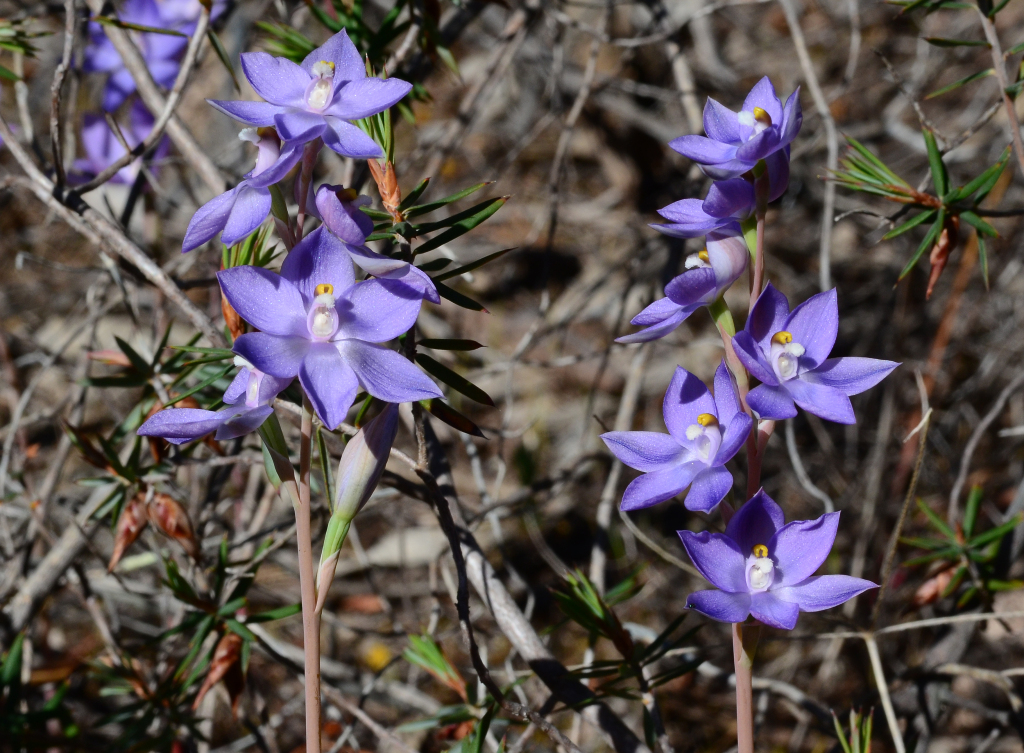Thelymitra alcockiae
D.L.Jones ex JeanesFlowering stem erect, straight, 10–40(–60) cm tall, 1–3.5 mm diam., straw-coloured to purplish, often pruinose. Leaf linear to linear-lanceolate, attenuate, 8–25(–40) cm long, 5–10 mm wide, fleshy, canaliculate, ribbed abaxially, sheathing at base, dark green grading to purplish towards the base. Inflorescence 2–8(–12)-flowered, loose. Sterile bracts usually 2, rarely 1 or 3. Perianth segments lanceolate to ovate, (8–)10–16 mm long, pink, mauve, pale blue to deep purplish blue, rarely white. Column slender, 4–6.5 mm long, pink or pale blue; mid-lobe hooding the anther, tubular, inflated, gently curved through c. 90 deg., brown, apex shallowly bilobed, yellow; lateral lobes converging 1–1.5 mm long, digitiform, porrect at base then bent upwards at c. 90 deg. near the middle, each with a toothbrush-like arrangement of white hairs, terminating in front of mid-lobe. Anther inserted about mid-way along column, shortly beaked. Flowers Aug.–Oct.
LoM, MuM, Wim, GleP. Also SA. Grows in dry lowland areas, often in woodlands or mallee scrublands on well-drained sand or sandy loams, often over limestone.
Flowers open readily on warm days and are sweetly scented.
Thelymitra megcalyptra is often confused with T. alcockiae, but the former favours more mesic habitats, has generally larger flowers and the leaf only has reddish colourations towards the base.
 Spinning
Spinning

